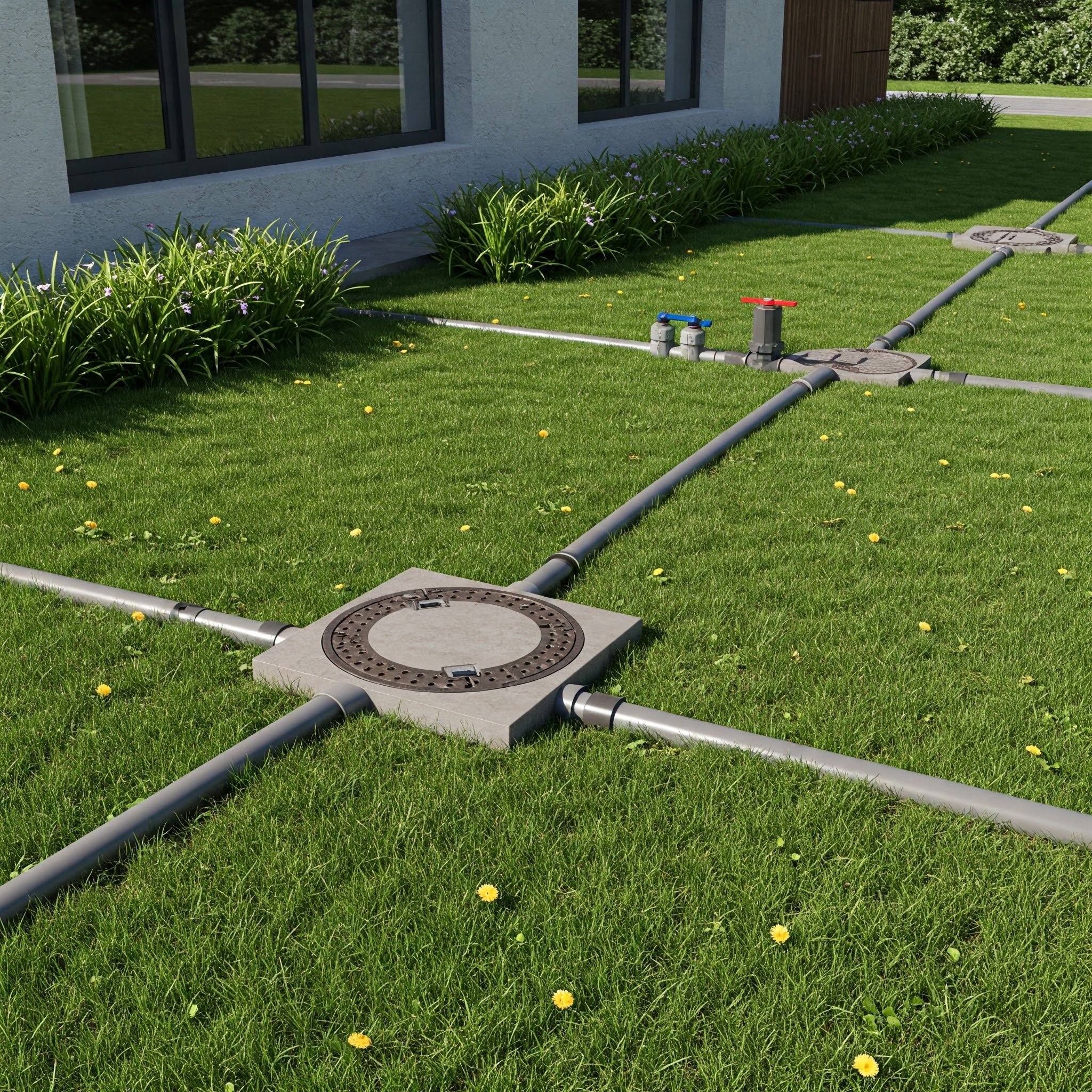How Often Should You Aerate Your Yard?
Wondering how often to aerate your yard for healthy grass? Find out the ideal aeration schedule, when to do it, and why your lawn will thank you in this detailed guide.
You love your yard—until the grass starts thinning, puddles form after rain, or your lawn feels more like a brick than a lush carpet underfoot. If these sound familiar, it might be time to ask: How often should you aerate your yard? Aeration is one of those gardening tasks people forget about, but it’s essential for maintaining healthy, thriving grass. Don’t sweat it, though! We’re here to help you figure out when, why, and how to aerate, so your lawn can stay green and happy all year long.
What is Lawn Aeration, and Why Should You Care?
In a nutshell, aeration involves punching small holes into your lawn to help water, nutrients, and air reach the roots. Think of it as giving your yard a breather—it breaks up compacted soil, promotes healthy root growth, and encourages thick, vibrant grass. If your lawn feels like it’s gasping for air, aeration might be the solution it’s begging for.
Here’s why aeration matters:
Improves drainage: No more standing water or swampy spots after a rainstorm.
Boosts nutrient absorption: Fertilizer works better when it can actually reach the roots.
Reduces thatch buildup: Aeration helps break down that layer of dead grass and debris.
Encourages stronger roots: Healthy roots lead to a healthy, lush lawn.
Lawn aeration is a game-changer for anyone looking to achieve a healthier, more vibrant yard. By creating small holes in the soil, aeration improves drainage, preventing standing water and soggy areas after heavy rains. It also boosts nutrient absorption, allowing fertilizer to penetrate deep into the soil where roots can access it more easily. Aeration helps reduce thatch buildup, breaking down the layer of dead grass and debris that can block water and air from reaching the soil. Most importantly, aeration encourages stronger roots, promoting a resilient lawn that stays lush and green throughout the season. Regular aeration ensures your lawn stays healthy from the ground up, giving it the best chance to thrive.
How Often Should You Aerate Your Yard?
Ah, the big question: How often is too often, and when is it just right? Well, it depends on a few factors—soil type, lawn traffic, and grass health. Generally, most homeowners aerate once a year, but that’s not a one-size-fits-all answer.
1. Annual Aeration for Most Lawns
For the average lawn, aerating once a year in early spring or fall works like a charm. This schedule helps grass recover from seasonal wear and tear, and it preps the yard for optimal growth during its peak growing season.
Cool-season grasses (like fescue or bluegrass) thrive when aerated in the fall.
Warm-season grasses (like Bermuda or zoysia) benefit most from spring aeration.
Pro tip: Time your aeration right before the grass enters its active growing period, so it has time to heal and spread out.
2. Twice-a-Year Aeration for Heavy Use or Compacted Soil
If your yard hosts more parties than the neighborhood dog park, it’s going to need some extra love. High-traffic areas and yards with clay-heavy soil might need aeration twice a year—once in the spring and once in the fall.
Compacted soil can choke your grass roots, limiting water and nutrient flow.
High foot traffic compresses the soil, making it tough for the lawn to bounce back.
When in doubt, give your lawn a poke test: Stick a screwdriver into the ground. If it’s hard to push in, aeration is in your future.
3. Aerating Every 2-3 Years: Is It Enough?
If you’ve got sandy soil or a lawn that’s rarely used, aerating once every 2-3 years might be sufficient. This schedule keeps your yard in shape without overdoing it. Be sure to keep an eye on how your grass looks and feels—if it’s healthy and vibrant, you’re golden!
How to Know When It’s Time to Aerate
Not sure if your yard is due for aeration? Look for these telltale signs:
Water pools on the surface after rain.
Grass looks thin and struggles to grow, even with fertilizer.
Thatch buildup is thicker than half an inch.
Hard, compact soil makes it difficult to stick a tool into the ground.
Foot traffic or heavy equipment has worn down areas of the lawn.
If your lawn isn’t thriving, it might be time to consider aeration. There are a few telltale signs that your yard could benefit from this process. Water pooling on the surface after rain suggests that the soil isn’t absorbing moisture effectively, leading to drainage problems. Thin or patchy grass, even with regular fertilizing, indicates the roots aren’t getting the nutrients they need. Thick thatch buildup, over half an inch, can block water, air, and nutrients from reaching the soil. If the soil feels hard and compact, making it difficult to insert a tool, it’s a clear sign of compaction. Additionally, areas affected by heavy foot traffic or equipment often become worn down, signaling the need for aeration to help the lawn recover and grow stronger.
The Best Time to Aerate Your Lawn
Timing matters when it comes to aeration. Doing it at the wrong time can stress your grass instead of helping it.
Aerate in Spring for Warm-Season Grasses
Best for Bermuda, St. Augustine, and zoysia grasses.
Aim for late spring, just as the grass starts to grow vigorously.
Best for fescue, ryegrass, and bluegrass varieties.
Shoot for early fall, so the grass has time to recover before winter.
Timing your lawn aeration based on the type of grass ensures the best results. Warm-season grasses like Bermuda, St. Augustine, and zoysia thrive when aerated in late spring, just as they begin growing vigorously. Aerating at this time allows the grass to recover quickly and take full advantage of the growing season. On the other hand, cool-season grasses such as fescue, ryegrass, and bluegrass benefit most from aeration in early fall. This gives the grass plenty of time to recover and strengthen its roots before winter dormancy. Aerating at the right time for your grass type helps ensure a lush, healthy lawn that can handle seasonal changes and foot traffic with ease.
Tools of the Trade: What You’ll Need for Aeration
Got your heart set on aerating? Awesome! Now, let’s make sure you’ve got the right tools for the job.
Core aerator: Removes small plugs of soil for maximum benefits.
Spike aerator: Pushes holes into the soil without removing plugs (good for light aeration).
Lawn shoes with spikes: Fun to wear, but not as effective as a core aerator.
Choosing the right aeration tool can make a big difference in your lawn’s health. A core aerator is the gold standard, removing small plugs of soil to improve drainage and boost nutrient absorption. This method allows roots to spread more easily and helps break down thatch buildup, delivering maximum benefits. A spike aerator, on the other hand, pushes holes into the soil without removing plugs, making it a suitable option for light aeration or smaller areas. For a more casual approach, lawn shoes with spikes are a fun option—just strap them on and walk across your yard! However, while these shoes can help with minor aeration, they aren’t as effective as a core aerator for deeper, long-lasting results.
What to Do After Aeration
Aeration is just the first step. To get the most out of your efforts, follow up with some TLC:
Overseed your lawn: Add new grass seed to help fill in thin areas.
Apply fertilizer: Aeration allows nutrients to penetrate deeply, so it’s the perfect time to feed your lawn.
Water thoroughly: Keep the soil moist to help the grass recover and the seeds germinate.
You’ll notice your lawn looking healthier and fuller in just a few weeks.
Conclusion
So, How Often Should You Aerate Your Yard? As it turns out, the answer depends on your yard’s unique needs. For most lawns, once a year is just right, but high-traffic areas or compacted soil might need twice-a-year care. Meanwhile, sandy soil or a low-maintenance lawn might only need aeration every 2-3 years. Pay attention to how your grass looks and feels—if it’s showing signs of struggle, aeration could be the fix you’ve been searching for.
Whether you’re a seasoned lawn enthusiast or a beginner learning the ropes, aerating your yard is a game-changer. Not only does it improve soil health, but it also helps your grass grow thicker, greener, and stronger. So, grab that aerator, roll up your sleeves, and give your yard the breath of fresh air it deserves. Your lawn will thank you—promise!
Frequently Asked Questions
1. Can you aerate your lawn too much?
Yes, over-aerating can stress your grass and damage the roots. Stick to once or twice a year unless you’re dealing with extreme soil compaction.
2. What’s the difference between spike and core aerators?
A core aerator removes plugs of soil, offering deeper benefits. A spike aerator, on the other hand, pushes holes into the ground, which works for light aeration but doesn’t address compaction as well.
3. Can I aerate my lawn myself, or should I hire a professional?
Both options work! If you’ve got the time and energy, renting an aerator is cost-effective. But if you want to save your back, hiring a pro is a great idea.
4. How long does it take for a lawn to recover from aeration?
Your grass should bounce back in 2-4 weeks, depending on the weather and how well you care for it post-aeration.
5. Should I water before or after aerating?
Watering a day or two before aerating softens the soil, making the job easier. After aeration, water deeply to help your lawn recover.
































